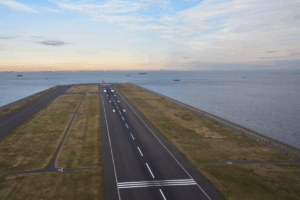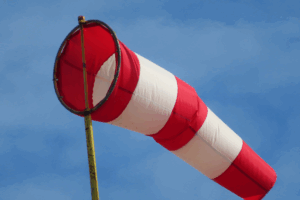20 世纪初,当商业机场开始运营时,跑道照明系统通常由煤油照明弹、烽火和泛光灯组成,用于标记着陆区。那时,机场运营者利用一切方便的工具来确保飞机安全高效地起飞和降落。
如今的现代化机场,先进技术已成为跑道照明系统不可或缺的日常设备。精确进近路径指示器(PAPI)就是飞行员在进近过程中依赖的创新技术的一个重要例子。
这些装置在提高机场跑道安全方面非常有效,因此美国联邦航空管理局 (FAA) 和国际民用航空组织 (ICAO) 都规定大多数商业机场必须使用 PAPI 系统。
在本月的博客中,我们将揭示 PAPI 设备的作用、工作原理以及为什么您的机场需要安装可运行的 PAPI 设备。
精确进场路径指示器系统的工作原理
PAPI 装置是安装在跑道旁的一系列灯具。较大的机场通常使用四个灯头,排成一排,而一些较小的机场只使用两个灯头。
每个 PAPI 灯具发出的光束分为两个色区:顶部为白色,底部为红色。飞行员看到的是这些颜色的混合,表示他们当前的接近角:
- 白灯多于红灯,表明进场高度过高
- 红灯多于白灯表示进场高度过低
- 两个白灯和两个红灯表示正确的滑行方式

这是一个简单明了的系统,可为飞行员提供即时的视觉提示。与需要时间解读的驾驶舱仪表不同,PAPI 可直接确认飞机的下降高度,以便在关键时刻进行实时修正。
在机场安装精确进场路径指示器有什么好处?
进场和着陆是飞行中最具挑战性的阶段,尤其是在恶劣天气、能见度低或跑道周围有障碍物的情况下。PAPI 设备通过以下方式帮助降低事故风险:
- 帮助飞行员避免低射或高射跑道阈值
- 即使驾驶舱仪表失灵或信号中断,也能提供一致的视觉确认
- 通过保持飞机与安全滑行斜坡对齐,防止受控飞行进入地形 (CFIT)
- 让飞行员能够一目了然地获得即时路径验证,而无需交叉检查多个仪器,使他们能够更多地关注其他关键任务,如监控空速、逆风或交通隔离等
尽管 PAPI 为机场带来了巨大的安全优势,但它们还具有其他重要优势,可提高机场的运营水平:
- 可在多变的天气和能见度条件下精确着陆,提高跑道的有效容量
- 减少绕飞和着陆失败的频率,保证按计划运行
- 有助于降低因操作失误而导致的事故风险,避免漫长的调查和诉讼过程
- 在正确安装和维护 PAPI 系统的情况下,提高机场在遵守法规和主动安全投资方面的声誉
- 采用 LED 技术,能耗更低,可最大限度地减少维护人员的跑道停机时间,与前代卤素灯相比,更换灯泡的次数更少,可为机场运营商节省大量成本
- 可与高级照明控制和监测系统 (ALCMS) 轻松集成,为操作员提供集中可视性和控制,包括根据可视条件自动调节 PAPI 光束亮度的功能
阅读更多 升级跑道照明系统时的 5 个基本要点
使用 L-880(L)/L-881(L) LED 精确进场路径指示灯 (PAPI) 提高机场安全性
当您希望使用采用 LED 技术的高品质 PAPI 来升级或扩展跑道系统时、 L-880(L)/L-881(L) 设备提供了完美的解决方案.
该 PAPI 系统使用 LED 灯泡,具有可靠的光度测量性能,使用寿命超过 150,000 小时。这些设备结构紧凑、重量轻,具有 LED 数字显示屏,无需打开即可显示状态。此外,它们还易于快速维护,无需光学工作台或特殊工具即可进行维修。
L-880(L)/L-881(L) 设备为先进的跑道安全、效率和成本效益设定了标准,提供机场保护飞行员、乘客和机场基础设施所需的精度、耐用性和可靠性。
如果您对机场投资 PAPI 技术的原因有任何疑问,请联系 Airport Lighting Company 专家,我们将为您提供快速、友好的服务。我们非常乐意为客户量身定制解决方案,以提高其运营的安全性、效率和盈利能力。
请致电 Airport Lighting Company,了解最新的机场照明技术
Airport Lighting Company 团队是 随时准备回答您的问题 了解我们的技术产品如何帮助您提高跑道的安全性、可靠性和效率。请致电 315-682-6460,我们将为您提供快速、友好的服务。


